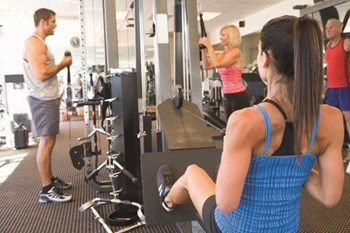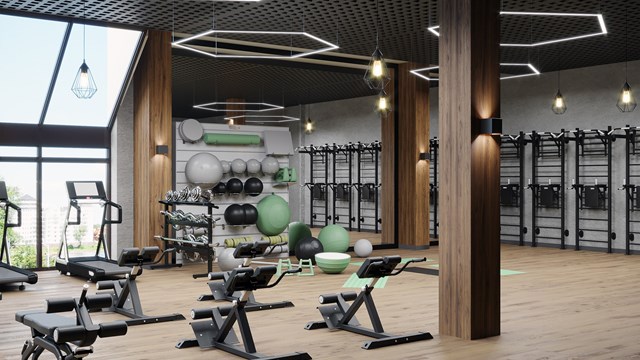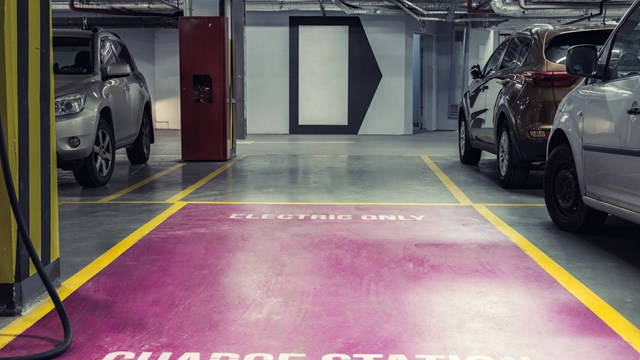
The most popular amenity by far in apartment communities—whether co-op, condo, or rental—is a gym. Even in small buildings, where space for extras is at a premium, boards look for ways to add a fitness room somewhere, anywhere, they can wedge it in. With new technology and design solutions, creating an efficient space to exercise might be easier than you think.
The Cutting Edge in Gyms
Gail Hamilton, executive director at ProFIT, a national fitness space management firm based in New York City, says technology is the driving force in in-building gym design and management today. “The trend is toward computerized metrics with other exercisers,” says Hamilton. “Systems like the Peloton bike: you ‘game’ yourself against other users and the instructor. ‘Babysitting’ abilities like Netflix and Dora are popular, too. Other amenities like being able to go online when you’re working out to check email are not going away. Today’s users have grown up with technology. They need and use it while exercising. This new interactive technology makes regular TV in a gym obsolete. Today’s users want live-stream, no channel flipping. And they want it with live feed showing how many calories they’re burning at the same time. Basically, they want what they want when they want it, and that’s what we try to give them.”
“Cardio is still king,” says Hamilton of what most users look for in a gym. That means lots of treadmills, bicycles, and something called “the Mirror”—basically a giant smart-touch device that affixes to a wall and lets users customize and interact with their fitness training. As concerns interactive bikes like Peloton, Hamilton explains that the company will no longer sell its product to multifamily buildings, as they believe it cuts into their individual unit sales. However, the Mirror will, and so will Echelon—Peloton’s main competitor and manufacturer of a product akin to the Mirror called Reflect. Hamilton reports that they are putting this equipment in middle-market buildings as well as high-end properties.
Design Considerations
When planning the space, Hamilton recommends that boards and residents need to think big. Provide more space than you think will be sufficient, as it never is. Don’t go cheap on equipment either. “You are designing the space for ten years from now, not for today. The more you spend up front, the longer it will last,” she adds, “requiring fewer upgrades later.”
In terms of strength-training equipment, the trend is toward more functional-training units such as Queenax, which includes storage space for exercise components within it. Single-muscle, single-exercise equipment such as a leg extension are a no-no, as they take up too much space. All equipment must be efficient, which means multi-muscle and multi-exercise. Gravitron is another good option in that area.
Another consideration is that many users bring in personal trainers. Trainers take up space and must be taken into consideration and should be planned for.
Speaking of Trainers…
In planning a gym, particularly in a smaller building where you have more limited space and may not want to incur the cost of a professional gym management and design firm, consider consulting with a personal trainer who works in in-building gym spaces. They are familiar with the unique limitations of such spaces and are working with those quirks already.
Rachel Lavin has been training clients in their in-building gyms in New York for more than twenty years. “The problem with these gyms,” she says, “is that they are often designed by the board to fit the space. Not to be rude, but they don’t have a clue what to do. They should hire a professional to design it.” The space is always too small, she explains. “Boards should always consider more space than they originally intend to provide.”
Like Hamilton, Lavin says to keep away from old, clunky, single-muscle equipment. It takes up too much space, is inefficient, and can be replaced with better options. Uniformly, she continues, there’s too much cardio equipment, crowding out other options. A full set of free-weight dumbbells and kettle bells is much more important and flexible for most users.
David Orsini, also a personal trainer with experience working in New York City in-building gyms, adds that, “particularly for older people, as they age, they have an increased fall risk. Strength equipment is what they need to minimize that risk. It helps them maintain body balance and equilibrium. Cardio exercise doesn’t do that.”
While cardio does have its place in any age group’s exercise regimen, Orsini points out that “today’s clients are seeking a certain physical look. They want to be trim, cut. They want to look like they work out. If you do thirty minutes of cardio, you will lose fat, but it doesn’t build muscle or affect the look of the body.”
Therefore, both Lavin and Orsini recommend that when designing or redesigning an in-building gym, the board should consider reducing the amount of cardio equipment it needs, increasing the size of the gym as planned, and including dumbbells, kettle bells, and, most importantly, a multi-facet, multi-exercise cable-pulley tower system for resistance exercise. If there’s sufficient room, a squat rack is a nice addition, too. “I want my clients to be 'life functional,’ says Lavin, “so more types of exercise than just cardio are necessary.”
Boards need to consider professional expertise when designing their in-building gym, the same way they would consider professional advice in any other major building project or decision. For more information contact Hamilton at ghamilton@pro-fitclubs.com, Lavin at rachel@rachellavinfitness.com, or Orsini at www.davidorsinifitness.com.









Leave a Comment